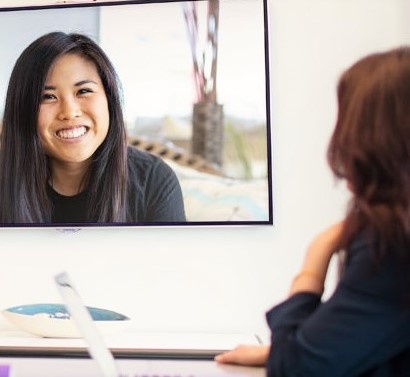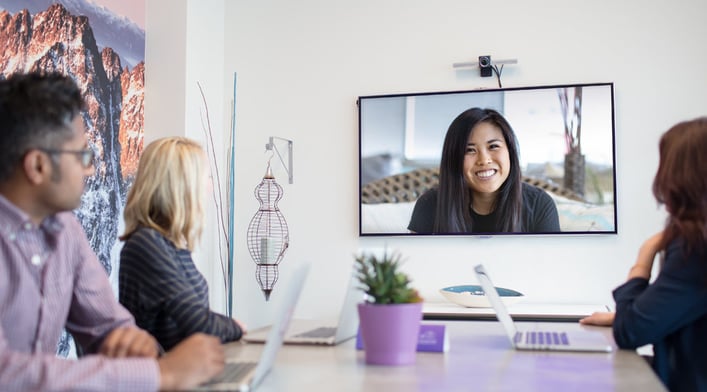
For many usability studies, recruitment can be a major challenge. It involves a series of activities, including identifying eligible participants, explaining the study, obtaining consent, and retaining the participants until the study is complete. There can also be additional challenges when a study is being conducted remotely.

It often happens that the time allocated for the recruiting process is underestimated. In fact, it’s important to take into account not only the hours put into recruiting before the study begins, but also all the hours spent in this activity during the study.
It is not uncommon for scheduled participants to withdraw from the study at the last minute. In these cases, the recruiter needs to be reactive by contacting and scheduling a new participant. This often translates into several more hours spent in recruiting.
The recruiting process for remote studies doesn’t change very much from study to study and it can be described in 5 steps:
1) Casting a wide net to find suitable participants
In order to find potential participants there are many methods that we can use:
- social networks
- online communities
- internal lists and databases
- lists provided by the client
We want the pool of potential participants to take a screener (usually in a Google Form or a SurveyMonkey survey) to verify that they have the requirements to participate in the study. Google Forms provides the added benefit of being able to see the screener results in real time and easily share the results with colleagues and clients.
While managing your list of potential participants there are two great features of Excel can save you time:
- Color coding: in Excel it is possible to modify the color of the cells to have a better visualization of the potential participants. The coding can be for example: green for participants already recruited, yellow for participants that we may want to recruit, red for participants that we want to exclude.
- Filter: every category can be filtered to make the research of good candidates easier
2) Qualifying participants over the phone
At this point it is possible to send an email to the potential participant, thanking him/her for their interest in the study and asking about their availability for a quick phone call.
It’s always better to have a quick chat on the phone with the participant before scheduling him to have a sense of what kind of person she/he is and to confirm that they are really a good fit.
During the phone call (that last usually 5 to 10 minutes) you want to make sure to explain again to the participant: the methodology of the study, the length, the compensation, and any other information that may be important.
After the phone call, if the participant is recruited and both parties (recruiter and participant) are satisfied with the terms and the time of the study, follow up with a detailed email. This email should contain everything that the participant needs to know such as:
- What to do before the study (NDA, pre-study questionnaire if present etc.)
- When and what to do during the study (session time, how to access Webex, Gotomeeting or the specific website where the interview will take place)
- What to do after the study (post-study questionnaire, etc)
Tip: The subject of the email has to be explicit. It should be a reminder of the study and day/time, for example “Your Online Interview Session Scheduled for Monday, October 20th at 8:00pm ET”.
3) Onboarding the participants
Remote studies often rely on technology that allows for screen sharing, audio and in some cases video conferencing. The recruiter needs to make sure that the participant is comfortable using this technology and understands how to use it for their scheduled session. The recruiter can schedule an onboarding session with each of the participants to walk them through any technology requirements.
4) Steps before the session:
Reconfirm with the participant via email or phone the day before their scheduled session. If it is not possible to onboard the participant a few days prior to the study, ask the participant to log in 5 – 10 minutes before their scheduled time, so that video/audio quality and remote sharing software can be tested.
Whenever the participant has to return a document (a signed NDA for example) before the interview, we should never assume he will do it several hours, or days, before the scheduled time of the interview. In our experience, we had to call the participant 30 minutes before the interview, reminding them that they owe a document or that they still have not completed the pre-study questionnaire. The benefit of having to call the participant again is that it gives us a good excuse to check on them before the interview to make sure that they will show up at the pre-established time.
5) Steps just prior to a session:
During the interview, there are several scenarios that can happen:
- The participant shows up and the session goes smoothly. After the session follow up with an email regarding the compensation and the method this will be provided.
- The participant asks to be rescheduled for another hour or another day. This happens quite frequently and often new time slots need to be created in the schedule to accommodate them.
- The participant doesn’t show up. This is unfortunate and will probably make you feel frustrated (for the effort and the time you have put into scheduling that participant). To address this situation, go back to the Excel spreadsheet and find another participant to screen and schedule.
- The moderator decides to dismiss the participant at the beginning of the interview. This is rare, but can happen when the moderator realizes that the participant is actually not a good fit for the study despite making it successfully through the screener.
Summary
The 5 steps above are best practices for every recruiter to ensure that the participants show up and are ready for the study. Recruiting can be difficult and sometimes unpredictable. In some cases, everything goes fine and there’s a good show rate for participants, other times it is necessary to double the predicted time to recruit because of the high rate of no-shows.
One last piece of advice: Be patient! Recruiters need to be patient and vigilant throughout the entire study to be successful at their job.











Comments
Add Comment